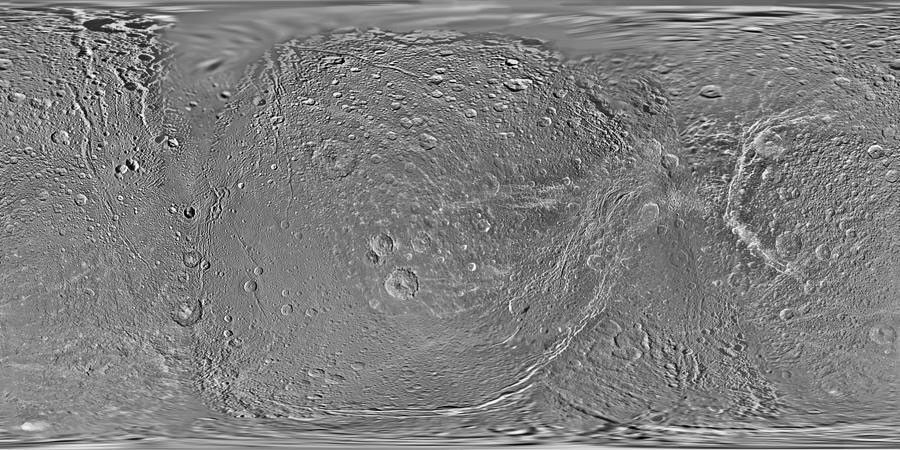Map of Dione – February 2010
| PIA Number | PIA12577 |
|---|---|
| Language |
|
This global map of Saturn's moon Dione was created using images taken during flybys by NASA's Cassini spacecraft. Images from NASA's Voyager mission fill the gaps in Cassini's coverage.
An extensive system of bright ice cliffs created by tectonic fractures adorns the moon's trailing hemisphere, which is centered on 270 degrees west.
The map is a simple cylindrical (equidistant) projection and has a scale of 153 meters (500 feet) per pixel at the equator. The resolution of the map is 64 pixels per degree. The mean radius of Dione used for projection of this map is 563 kilometers (350 miles). Like the 2008 version of the map (PIA08413), this updated map has been shifted west by 0.6 degrees of longitude, compared to the 2006 version of the map (Map of Dione - December 2006), in order to conform to the International Astronomical Union longitude system convention for Dione.
The Cassini-Huygens mission is a cooperative project of NASA, the European Space Agency and the Italian Space Agency. The Jet Propulsion Laboratory, a division of the California Institute of Technology in Pasadena, manages the mission for NASA's Science Mission Directorate, Washington, D.C. The Cassini orbiter and its two onboard cameras were designed, developed and assembled at JPL. The imaging operations center is based at the Space Science Institute in Boulder, Colo.
For more information about the Cassini-Huygens mission visit http://saturn.jpl.nasa.gov . The Cassini imaging team homepage is at http://ciclops.org .
Credit: NASA/JPL/Space Science Institute





























